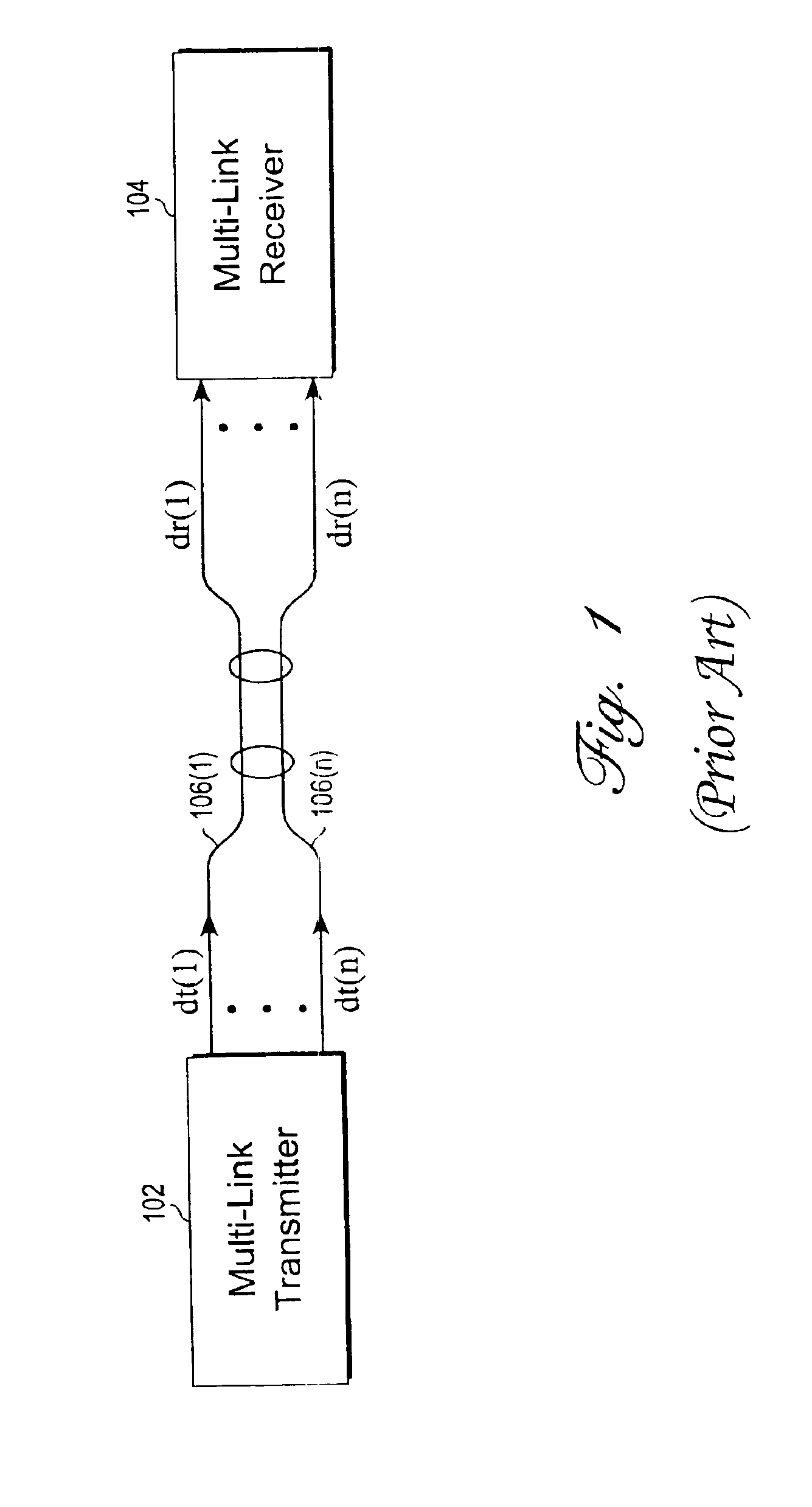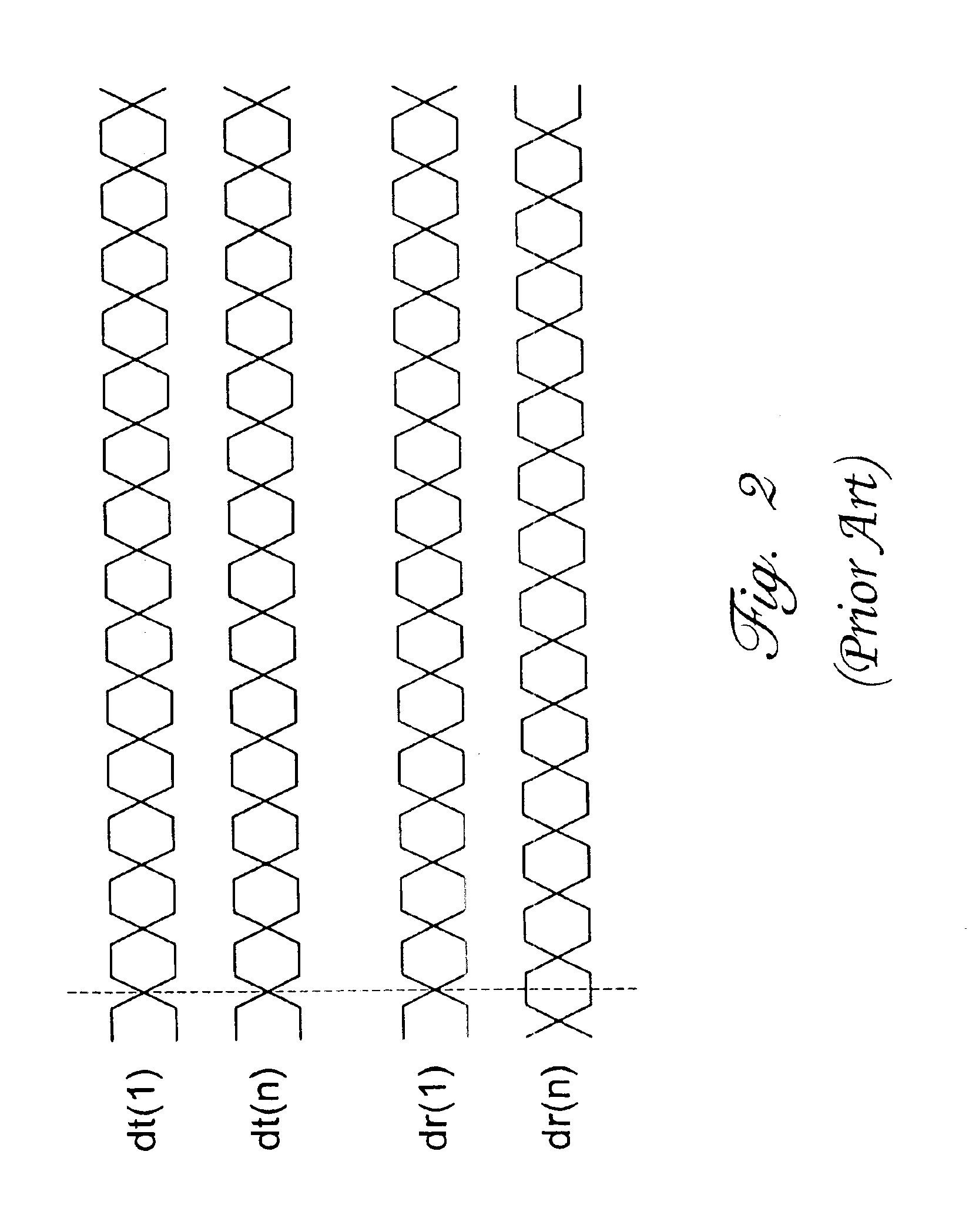Multi-link receiver for processing multiple data streams
a multi-link receiver and data stream technology, applied in the field of information transfer systems, can solve the problems of inter-pair skew, serialized information can take substantially longer than sending parallel information, and cannot be delivered without its own,
- Summary
- Abstract
- Description
- Claims
- Application Information
AI Technical Summary
Benefits of technology
Problems solved by technology
Method used
Image
Examples
Embodiment Construction
)
Throughout the following description, the terms “synchronized” and “aligned” will be used. To facilitate a complete understanding of the description, these terms will now be defined. When a first signal is referred to as being synchronized with a second signal, it is meant that the first signal has the same period or an integral multiple of the period of the second signal. For example, if the second signal has a period of T, then the first signal is synchronized with the second signal if the first signal has a period of T, 2T, 3T, 4T, and so forth. As an example, both the Clock signal and the control signal C1 of FIG. 4 are synchronized with the data stream dr.
Just because two signals are synchronized does not mean that they are aligned, however. For a first signal to be aligned with a second signal, all of the transitions of the first signal need to coincide with transitions of the second signal. If any transition of the first signal does not coincide with a transition of the seco...
PUM
 Login to View More
Login to View More Abstract
Description
Claims
Application Information
 Login to View More
Login to View More - R&D
- Intellectual Property
- Life Sciences
- Materials
- Tech Scout
- Unparalleled Data Quality
- Higher Quality Content
- 60% Fewer Hallucinations
Browse by: Latest US Patents, China's latest patents, Technical Efficacy Thesaurus, Application Domain, Technology Topic, Popular Technical Reports.
© 2025 PatSnap. All rights reserved.Legal|Privacy policy|Modern Slavery Act Transparency Statement|Sitemap|About US| Contact US: help@patsnap.com



